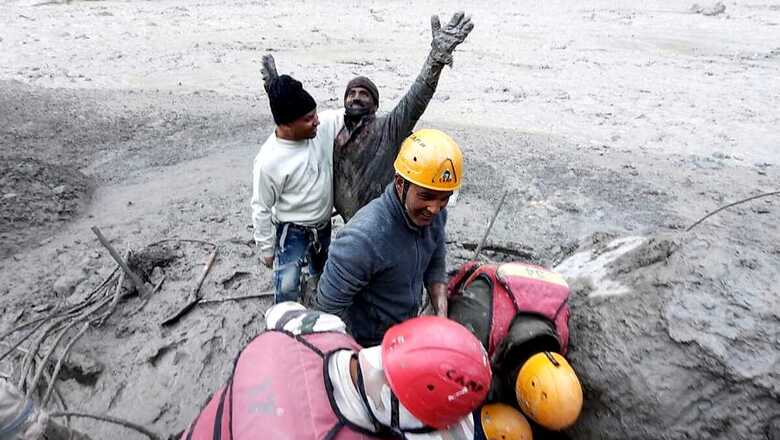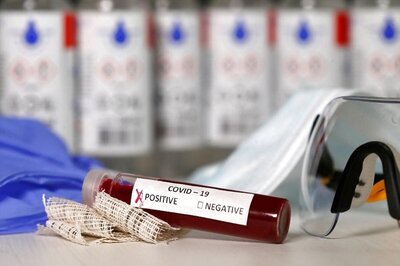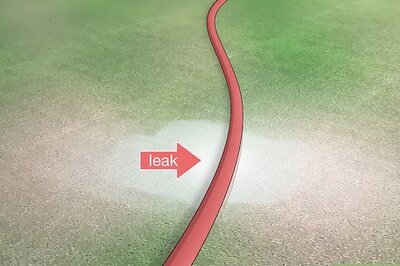
views
“We are hopeful, for 72 hours there are chances of survival,” said Uttarakhand Chief Minister Trivendra Singh Rawat on Monday. A day after the catastrophe – which saw Nanda Devi glacier burst through its banks at Joshimath, triggering an avalanche and a deluge – multi-agency relief operations continue in Chamoli and adjoining areas of the state.
Two power projects – NTPC’s Tapovan-Vishnugad hydel project and the Rishi Ganga Hydel Project were extensively damaged with scores of labourers trapped in tunnels as the waters and sludge came rushing in. According to the latest update, 20 bodies have been recovered, while 197 remain missing. These include workers, villagers, and NTPC personnel.
Rawat’s statement gives hope amid a bleak situation. As extensive rescue operations continue, News18 explains how long people can survive after being trapped in closed spaces after natural disasters.
HOW LONG CAN SURVIVORS LAST UNDER RUBBLE?
According to experts, a week at most under the best of circumstances. How injured the trapped victim is, if they have enough air to breathe and the extremity of the weather are among the determining factors for their survival. Major rescues occur 24 hours after a disaster, and after that, the chances of survival lessen by each day. Dr Richard Moon, a Duke University expert on survival told the Associated Press that food is not a big issue, as people can survive for weeks without it. However, most can survive only a few days without water, he added.
After a South Korean departmental store collapsed in 1995 – which killed 502 people and injured 937 – survivor Choi Myong Sok was pulled out of the rubble after 10 days, a report by the New York Times states. To survive, he drank rainwater and ate a cardboard box. He even played with a child’s toy to keep up his spirits, after two of his companions trapped with him died in the initial days.
Julie Ryan, a co-ordinator with UK-based group International Rescue Corps (IRC), told BBC that the ideal situation for anyone who has been trapped, is to have any sort of oxygen supply from the outside world, and any access to water.
Temperature also plays a role – if the entrapment area is too hot, the person could lose water more quickly, thinning their hope for survival.
Trapped victims can also experience the crush syndrome, which occurs after a “crushing” injury to a skeletal muscle. When a person is trapped after a disaster, their arms, limbs and other parts of the body can be compressed by the rubble, which causes muscle swelling or neurological disturbances. The end result can be fatal – renal failure or shock, and the condition requires immediate medical assistance.
CASES OF ‘MIRACLE’ SURVIVALS
More than two months after an earthquake hit Kashmir on October 8, 2005, a 40-year-old woman Naqsha Bibi was rescued from her kitchen. Her cousin, Faiz Din, who had found her, told BBC that the family was not even looking for her, having assumed that she had either fallen down a hill, or gone to another relief camp. Weighing just 35 kg, she was found with muscle stiffness, and was so weak she could barely talk.
Traces of rotting food were found in the small space where Naqsha was trapped, and the air inside was fresh. A trickle of water on one side of the kitchen was also found, the report states.
In a similar case, after the 2010 Haiti earthquake, a man was rescued from rubble in Port-au-Prince after 27 days of being trapped, the Guardian reported. He was found malnourished, dehydrated and mentally disturbed, but had suffered no serious injuries.
Reshma Begum was the centre of another miraculous survival, after a multi-storeyed garment factory building collapsed in Dhakha, Bangladesh in 2013. The disaster killed more than 1,100 people, but Rashma was rescued – 17 days after the incident. The then teenager said she had forgotten most of what she did under the rubble. However, she recalled that she had survived by drinking rainwater and eating food from the lunch boxes of other workers.
(With inputs from agencies)
Read all the Latest News, Breaking News and Coronavirus News here



















Comments
0 comment